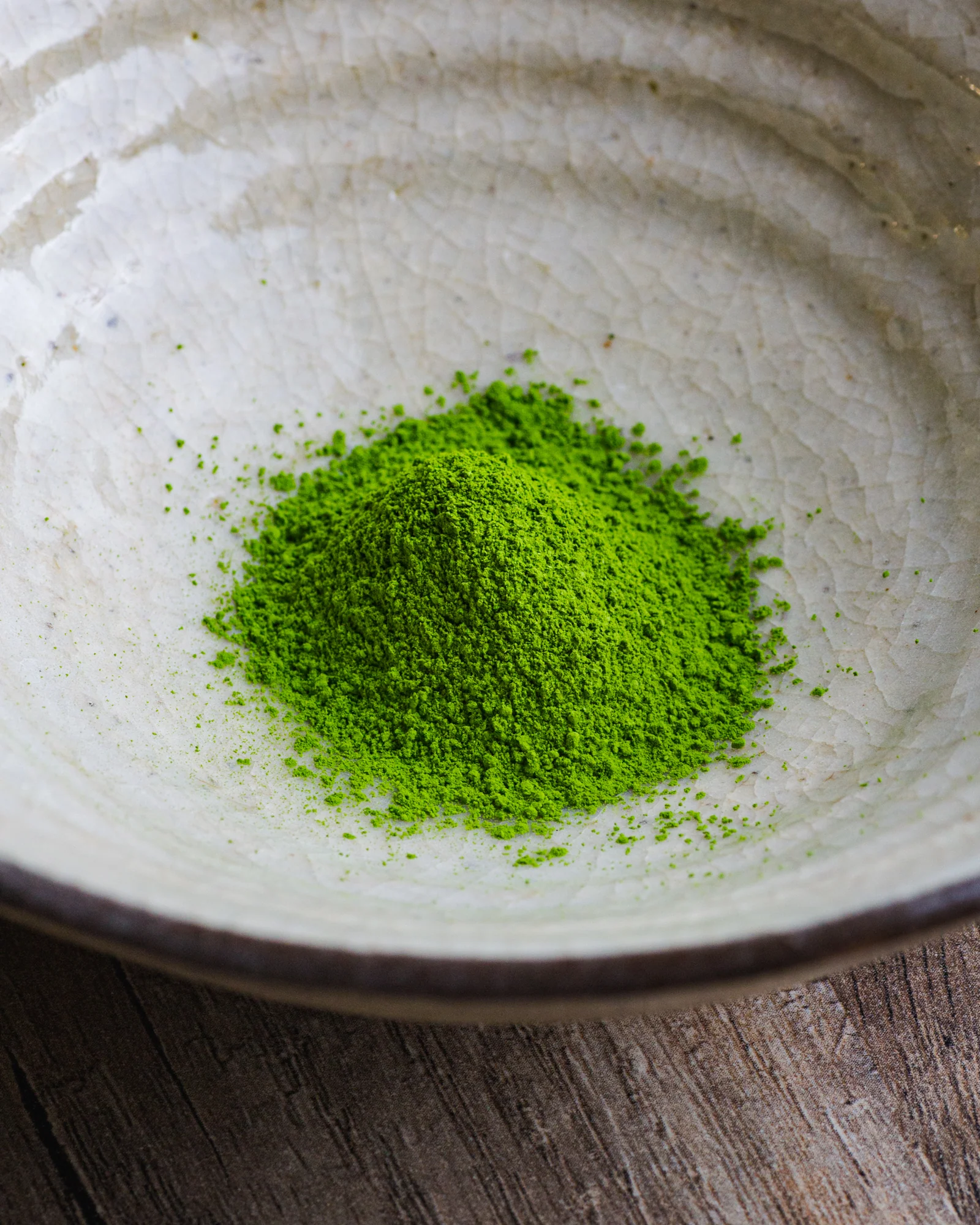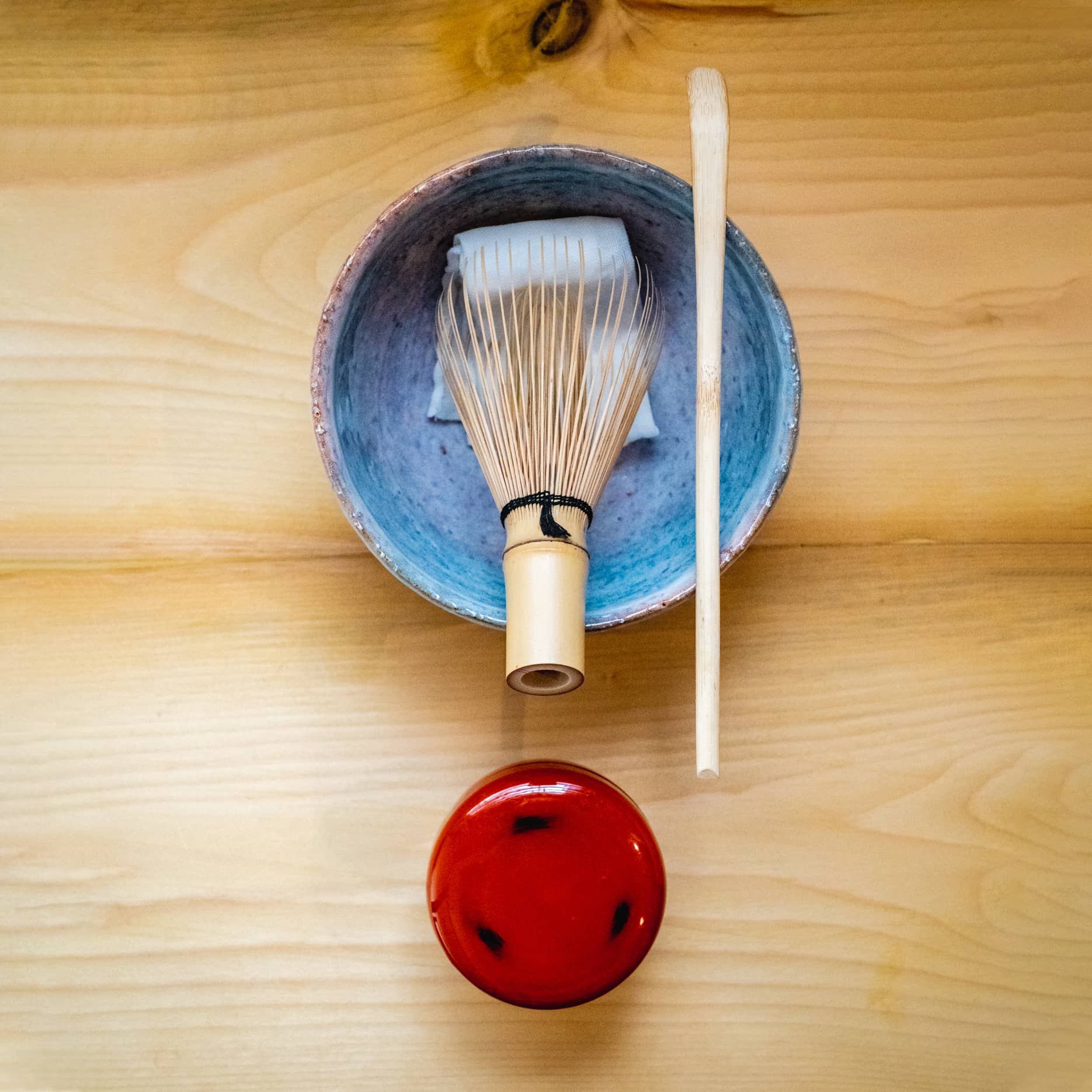Natsume - A Guide to the Ceremonial Tea Caddy
If you’ve ever attended or watched a Japanese tea ceremony, you’ll have noticed that the matcha is kept in a small lacquered container. Called natsume (棗) or usuchaki (薄茶器) in Japanese, these tea caddies are an integral part of a host’s toriawase (取り合わせ) - the art of carefully selecting utensils to suit a particular occasion or to invoke the desired atmosphere or balance. Here we’ll take a closer look at these simple yet elegant vessels.

What is a Natsume?
Natsume are lacquered wooden containers which are primarily used to store and present the matcha used for making usucha (薄茶 - thin tea). This distinguishes them from chaire, ceramic vessels which are used to hold higher-grade tea suitable for koicha (濃茶 - thick tea). As such, these lacquer containers should generally be referred to as usuchaki (薄茶器 - thin tea vessel) or usuki or chaki for short, but they are often referred to by the name of the most popular type, the natsume (棗 - chinese date/jujube).
Types of Usuchaki
Named after their shape’s resemblance to the chinese red date or jujube, natsume have a rounded shape that is wider at the top, with a gently domed lid that is roughly ⅓ of the total height. Usuchaki of this shape were first described in the 16th century but have likely been used as early as the 14th century. Traditionally, natsume are made from turned wood and covered with urushi lacquer, though today, cheaper plastic and resin options are commonly used for practice or informal use.
The most formal or shin-natsume are coated with undecorated black lacquer, while red, vermillion, decorated, and unlacquered natsume are varying degrees more informal. Some common decorative styles are maki-e (蒔絵) paintings, such as the common egret or golden bamboo motifs; negoro, a pattern of small black smears on a red base, mimicking the effect of parts of the outer red layer of lacquer wearing away to reveal black underneath; and koma (独楽 - spinning top) with painted horizontal stripes of green, red, and white mimicking the appearance of a fast-spinning top.
Natsume primarily come in three sizes: big (大棗 - O-natsume), medium (中棗 - chu-natsume), and small (小棗 - ko-natsume). Chu-natsume are by far the most common, and most natsume you encounter will likely be this size, around 6.8cm in both height and diameter. Ko-natsume are typically paired with a silk pouch, shifuku, or wrapped in a fukusa, and are used in place of a chaire to hold higher-grade matcha for making koicha.
In addition to these three main sizes are the even smaller ippuku natsume (一服棗 - one serving natsume ), which holds just enough tea for one serving of koicha; and the hira-natsume (平棗 - flat natsume) which which has a flattened shape with around a 3:2 or 2:1 ratio of diameter to height. Another variation of the natsume shape is the Shiribari (尻張 - stretched bottom) which has a more rounded base that is wider than the lid.
Moving away from the natsume shape we find various cylindrical vessels. The nakatsugi (中次) has a perfectly cylindrical shape, with a flat top and bottom. The line where the lid meets the body is perfectly in the middle (中), giving the nakatsugi its name. This style of usuchaki predated the natsume and is believed to have descended directly from yakki (薬器 - medicine vessel), old wooden medicine containers that may have originated in China. Today, the most popular variety of nakatsugi is the shin-nakatsugi (真中次) which is roughly the size of a chu-natsume. Like the shin-natsume, the shin-nakatsugi is finished in undecorated black lacquer. This style is often attributed to Sen-no-Rikyu (千利休) though it may have predated him. Additionally, nakatsugi are commonly found decorated with maki-e, left unlacquered, or made from a more exotic material like cherry bark.
One variation on the nakatsugi shape is the men-nakatsugi (面中次) which has a chamfered or bevelled lid. This chamfering makes it easier to tie the nakatsugi in a shifuku or fukusa for protection or gifting. Taking this a step further and bevelling the bottom edge as well, we get the fubuki (雪吹). This name might be confusing for Japanese speakers because the word fubuki, meaning snowstorm or blizzard, is typically written like this:吹雪 . But in the case of the tea container the kanji are reversed: 雪吹. One theory is that this name mimics the confusing shape of the fubuki itself, where you can’t tell the top from the bottom, and are disoriented as if you were caught in a blizzard.
These are just a few of the more common types of usuchaki, and there many more subtle variations and historical shapes that have fallen out of use. Today, artisans are still producing new varieties of usuchaki, such as this one shaped like a gourd.

Using Natsume

While natsume aren’t often used by non-tea ceremony practitioners, we think that they are a great way of elevating your tea experience and keeping in touch with the rich traditions that surround matcha, even if you don’t formally practise tea ceremony.
It should be noted that unless paired with an inner lid, the vast majority of natsume are not airtight and are not meant for long term storage of matcha. Instead, a portion of matcha is taken out of the tin/bag that it is being stored in, and sifted into a natsume for use during a tea gathering or your own personal tea habits. Historically, prior to a tea gathering, the host would grind just enough matcha for their guests, and store it in a chaire or usuchaki, with the hope that all of the tea would be used up by the end of the event.
Now that most of us matcha enthusiasts aren’t lucky enough to own a stone mill and freshly grind our own matcha, storing matcha for longer amounts of time is more of a concern. If you’re like us and drink a lot of matcha, you might consider sifting about a week’s worth of matcha into a natsume and keeping the rest in its original storage container. That way, only the matcha you’re going to use soon is kept in the natsume, and you get the benefit of heighting your tea experience with a beautiful vessel full of pre-sifted tea while also storing the bulk of your matcha in a more air-tight container.
Caring for your Natsume

As most natsume have some sort of lacquer finish, they can be very durable, but do require a little bit of care to keep in good shape:
Use It
Repeated handling actually makes urushi lacquerware shinier by gently polishing down the outer layer of lacquer.
Be Gentle
While lacquerware is tough, it can be scratched and damaged by metal or rough ceramics (such as the unglazed feet of chawan and yunomi), so be careful.
Keep it humid
Like bamboo, lacquerware prefers a slightly humid environment and should not be stored in a bone dry cabinet for too long. This is why genuine lacquerware often comes wrapped in paper inside of its wooden box. Storing it like this helps keep some moisture in the lacquer and wood
Never Soak It
A wipe with a dry cloth should be enough to clean most natsume, and a damp cloth can clean the rest. If this doesn’t do the trick, a quick wash in lukewarm water and even the use of a soft sponge and mild detergent are okay. However, be sure not to let it soak in water as this can weaken and discolour the lacquer. Similarly, be sure to wipe it dry with a soft cloth after washing.

Limit Direct Sunlight
UV rays present in sunlight can damage the lacquer, so don’t leave or store lacquer natsume anywhere that gets a lot of direct sunlight
To learn more about the other utensils used in a tea ceremony, check out our introductory guide here.

Matcha












